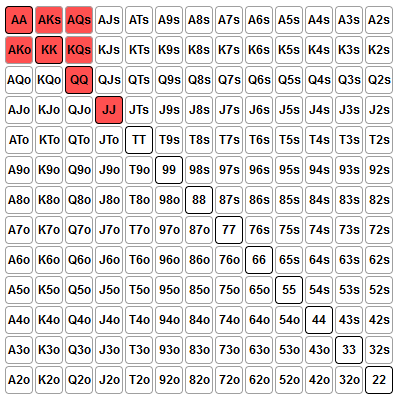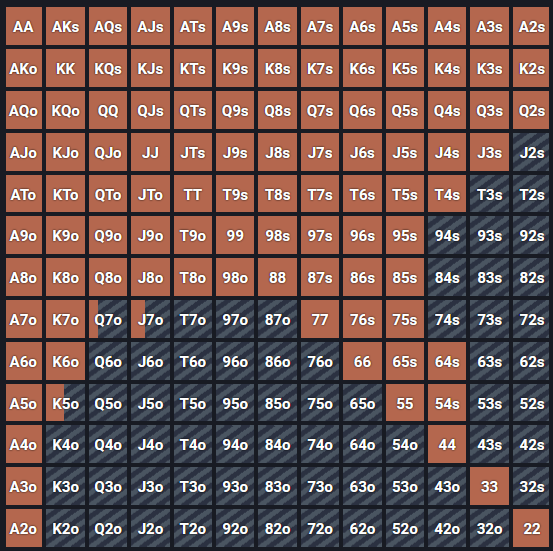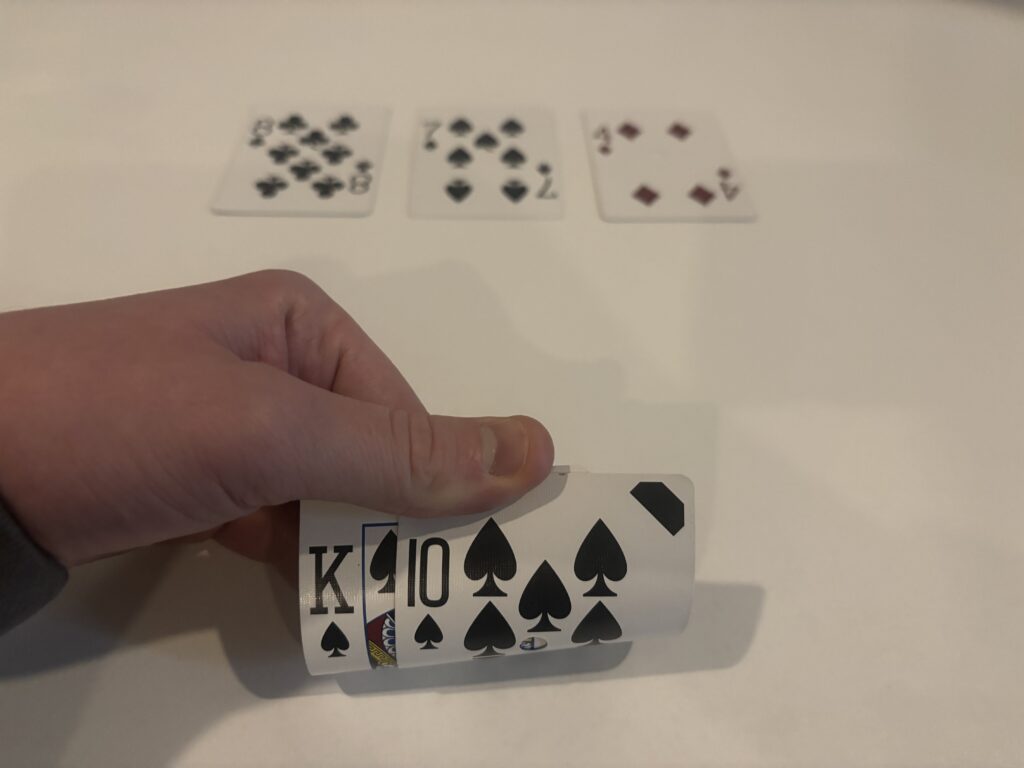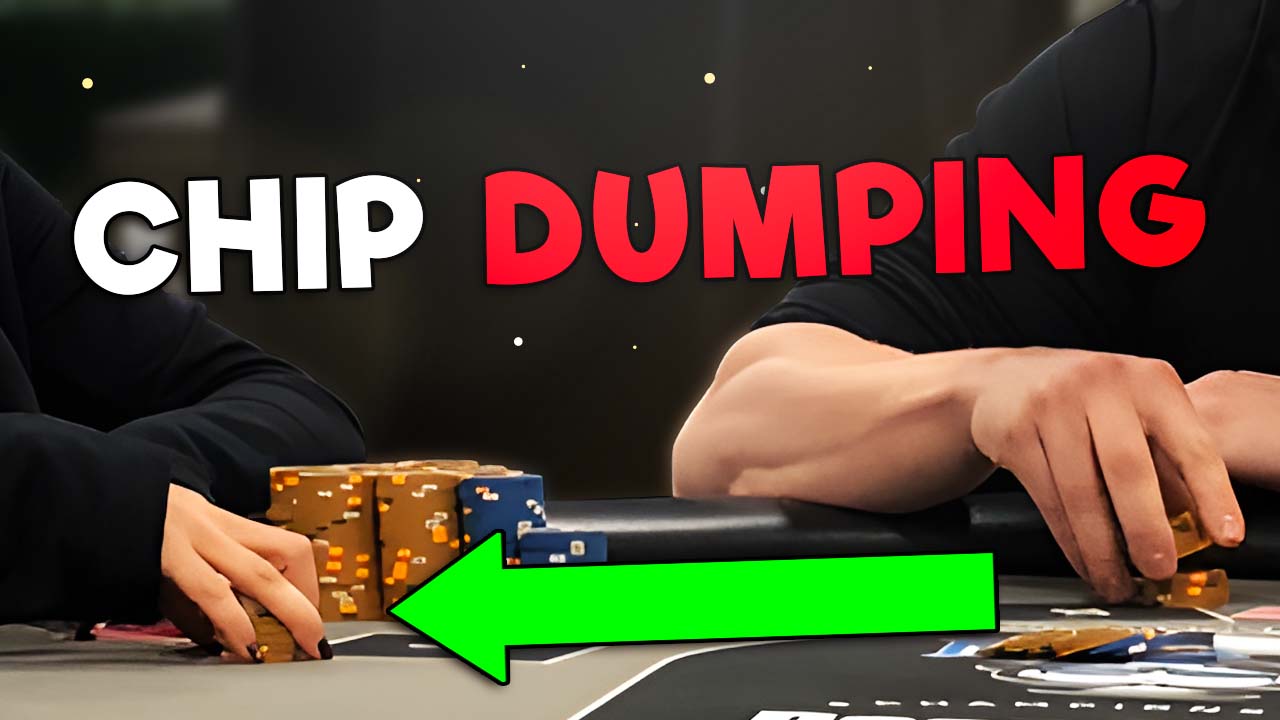There used to be a time when poker nits were able to dominate the game and win big at the poker tables, much thanks to the generally low level of play across the board. As poker games got tougher and tougher over the years, the nitty approach lost all appeal, and most players started moving away from playing an overly tight strategy.
However, even in today’s games, you will occasionally run across a poker nit who sticks to that old saying “tight is right” and continues to play only the very top of their range.
For that reason, this guide is designed to help you crush the nits in your games and ensure that you never have trouble with this player profile again.
But before we can look into particular strategy adjustments to use against nits, let’s examine what poker nits are, how they play the game, and what you can expect from them.
What Is a Poker Nit?
The term “nit” was coined long ago by live poker players to describe someone playing the game in a particularly snug position.
Poker nits play very tight before the flop, often only entering pots with the top 10% of the best starting hands and even tighter than that in early positions at the table.
A true nit will easily find a fold UTG with pocket nines, will not call a raise with KQ, and will never 3-bet AQ, while usually only flat-calling a hand like TT, JJ, or AK as well.
With such a tight range, nits really aren’t a problem in more than 80% of all the hands since all they do is fold their cards without seeing a flop. However, they do still enter some pots, and when they do they also play in a very particular way that can be easily exploited.
A poker nit plays poker “in a vacuum” and often does not care who he is up against. He is willing to fold big hands like AA when the board gets scary and will easily give up on bluffing, even with a strong draw.
So, now that you know what a nit in poker is, let’s take a look at some potential strategy adjustments that you can make to start printing money when facing nits.

Some poker pros have gained a reputation for being on the “nitty-er” side.
Tip#1 – Beware of the Nit’s Open
I said that I was going to discuss all the ways you can crush nits in your poker games, and a part of that strategy has to do with making sure you don’t value own yourself.
A nit’s opening range is very tight, and it becomes even tighter in early positions (EP), to the point where some nits only open AQ+ and JJ+ from early seats.
Against a range like this, you need to be very careful not to put more money into the pot than you have to, which means 3-betting a nit’s EP raise is usually a recipe for disaster.
Instead, what you can do is call such a raise with quite a few speculative hands, banking on both hitting big hands to get paid on some boards and being able to bluff the nit out on others.
However, remember that a hand like 66 or 87s has very little equity going up against pocket aces or KK, so even if you will win some pots by calling a nit’s EP raise, simply staying out of the way in such situations is often the best play.
If you are given a chance to see the flop somewhat cheap, and you have a reasonable hand, you can peel that flop but don’t bank too much on getting AA to fold on later streets.

Do not take a nit’s preflop raising range lightly, it is usually quite strong.
Tip #2 – Steal the Nit’s Blinds Relentlessly
Most players know to defend their blinds wide, but poker nits are well behind the times, and this is not an adjustment they have made.
For that reason, a nit’s big blind is more or less free money, as most nits only defend the big blind with less than 25% of all hands, and their small blind even less.
This means that anytime a nit is in the big blind, especially in tournaments, you get to raise with a much wider range than you normally do and make a direct profit from the nit folding too much.
Even when the nit does decide to defend his big blind, he will not be as sticky after the flop as most other players. A nit will routinely chuck the second pair into the muck postflop on many boards, and a simple c-bet will be enough to take it down most of the time.
Stealing the nit’s blinds is the best way to keep making money from having him at the table, as his general involvement, on the other hand, is very limited.

While your button preflop raising range should be wide,
it can be even wider when facing nits in the blinds.
Tip #3 – Re-stealing from the Nit
As I already discussed, early position raises from nits are usually reserved for the very best of hands, which means you should not get too involved too much in such situations. However, as the nit’s position shifts, he will begin opening a wider range.
On the cutoff or button, a nit will open suited Broadways, suited connectors, and middling pairs for a standard raise. However, the one thing a nit is not equipped to properly deal with is 3-bets, which is why he is the perfect candidate to re-steal from.
When a nit opens the button, you can easily get away with re-raising him with a wide range of suited hands, expecting quite a few folds right away.
While most players will defend against 3-bets quite wide in position, a nit will only play the face value of his cards and often fold hands like 98s to a 3-bet, giving you instant profit.
When a nit does call your re-raise, a simple c-bet will often take it on the flop. You may even win against a hand like JJ or QQ when an A or K hits the flop and the nit decides to give up.
Playing against nits is very different than playing against other poker players like calling stations, so make sure to always keep in mind the type of player you are going up against.

Apply pressure on nits by 3-betting their late position raises.
Tip #4 – Using the Board versus the Nit
There is nothing scarier to a nit than a board made up of a bunch of low cards in suits he does not have, and when playing them live, you will be able to see their discomfort in real-time.
When playing pots against nits, you should be very aware of how linear their range tends to be and what types of boards don’t interact with it at all.
For example, a nit raising in the early or middle position will have very little, if any interaction with a board like 6♥5♥2♦ or 9♣7♣6♥, making both boards ideal to take the pot away from him.
While the unit will always have some nut flush draw combos on boards like this, these draws and overpairs are the only hands you need to worry about.
What’s even more, further scare cards may help you win the pot even against an overpair, while the flush draws will usually give up when they miss.
Floating c-bets on a board like this and going for a bluff on later streets is the recipe for success against the nit, who will be very uncomfortable calling big bets even with AA once further cards connect with the low board.

Use favorable boards to apply pressure on the nit.
Tip #5 – Using Big Bets
Unlike LAGs or TAGs, poker nits tend not to be very studied poker players but rather old-school players who learned how to play the game on the go.
There isn’t really too much method to their play, and their entire strategy is predicated on the idea of avoiding losing big pots while winning some small ones along the way to break a small profit.
The problem with that strategy in a game like No Limit Hold’em is that we, their opponents, have a chance to bet big and bet often, and this goes directly against the nit’s desire to stay out of big pots.
So, when playing against a nit, you can often win the pot with pure aggression. Making big bets with your draws or relatively weak hands will often make them fold top pair or better, as he is afraid of monsters.
This isn’t to say that you should try to bluff the nit out every chance you get, as their range will often be so strong, but when you do try to win a pot off him, you should make sure to bet big and with confidence, as that’s the one thing nits are most afraid of.
Formulating Your Perfect Formula Against Nits
Poker nits are perhaps the easiest poker players to play against, as they tend to play their hands without much balance or disguise, often advertising the strength in advance. A poker nit will play his big hands very aggressively while playing everything else passively and just calling, helping you narrow down his range much more precisely.
Nits are very afraid of big bets, which is why you should utilize them when bluffing, and this should be your plan anytime the board does not work well with the nit’s range, even if your hand isn’t particularly good.
Your game plan against nits in poker should be far away from what GTO strategy recommends, as the ranges they will call your bets differ wildly from what a solver assumes for an average player.
So, the next time you play with a nit at the table, remember the strategy tips we gave you here and try to apply them in real time.
You will notice the nit get out of your way and let you win all pots but the very few in which he makes the nuts, which you should be able to sniff out by bet sizing and overall player behavior in such situations.





